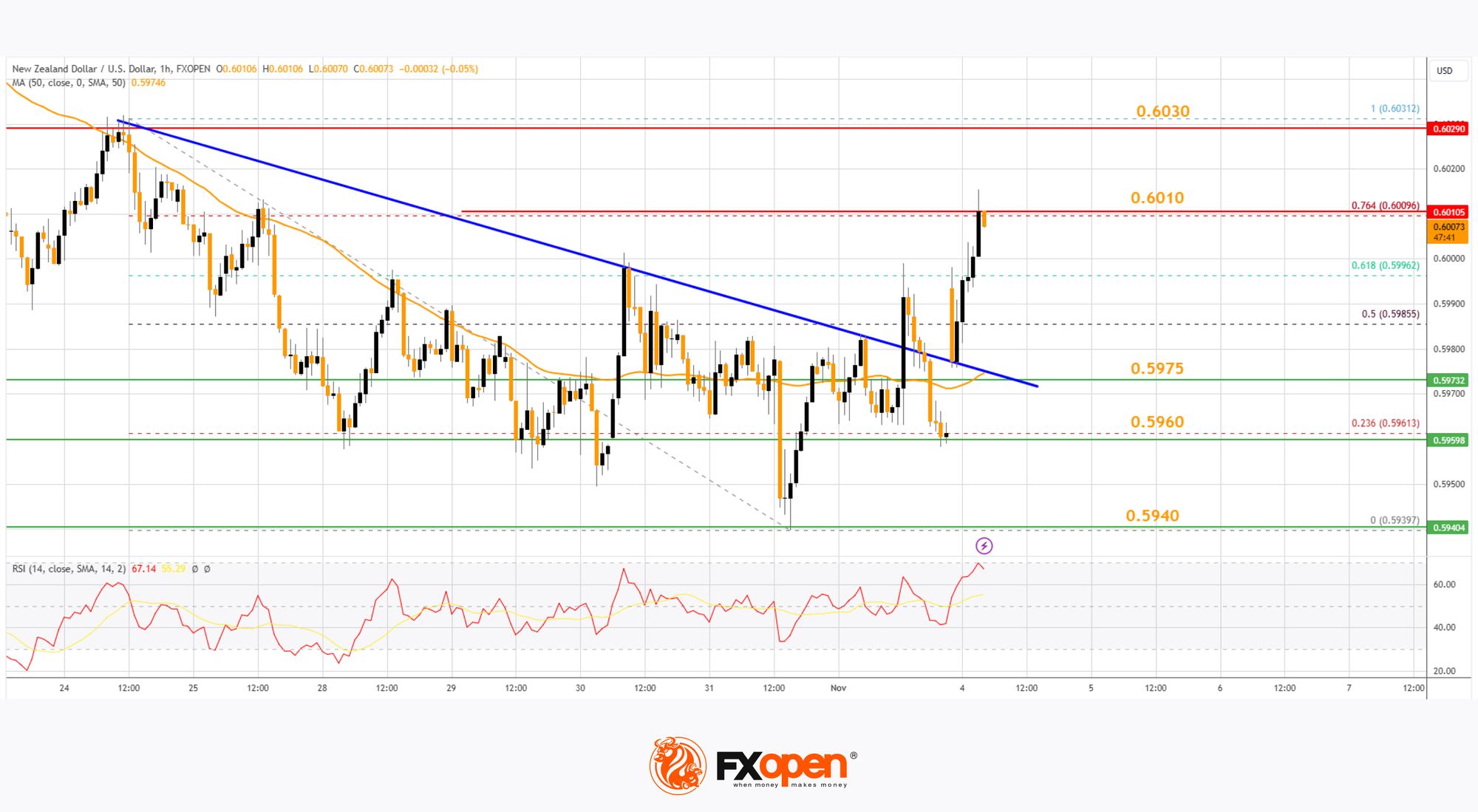FXOpen

AUD/USD is attempting a recovery wave from 0.6540. NZD/USD is also correcting losses and might recover further if there is a clear move above the 0.6030 resistance.
Important Takeaways for AUD/USD and NZD/USD Analysis Today
· The Aussie Dollar found support near 0.6540 and is now recovering against the US Dollar.
· There was a break above a key bearish trend line with resistance at 0.6575 on the hourly chart of AUD/USD at FXOpen.
· NZD/USD is attempting a recovery wave above the 0.5960 resistance.
· There was a break above a major bearish trend line with resistance near 0.5980 on the hourly chart of NZD/USD at FXOpen.
AUD/USD Technical Analysis
On the hourly chart of AUD/USD at FXOpen, the pair dipped from the 0.6600 resistance zone. The Aussie Dollar declined below 0.6600, but the bulls were active near 0.6540 against the US Dollar.
A low was formed near 0.6537 and the pair is now correcting losses. There was a move above the 50% Fib retracement level of the downward move from the 0.6659 swing high to the 0.6537 low. There was also a break above a key bearish trend line with resistance at 0.6575.

The pair is now above 0.6585 and the 50-hour simple moving average. On the upside, immediate resistance is near the 61.8% Fib retracement level of the downward move from the 0.6659 swing high to the 0.6537 low at 0.6610.
The first major resistance is near a rising channel at 0.6630. A clear upside break above 0.6630 could send the pair toward 0.6660. The next major resistance on the AUD/USD chart is near 0.6680, above which the price could rise toward 0.6725. Any more gains might send the pair toward 0.6740.
On the downside, initial support is near 0.6575 or the 50-hour simple moving average. The next support could be the 0.6540 zone. Any more losses might send the pair toward the 0.6500 support.
NZD/USD Technical Analysis
On the hourly chart of NZD/USD on FXOpen, the pair also followed a similar pattern and declined from the 0.6030 zone. The New Zealand Dollar gained bearish momentum and traded below 0.6000 against the US Dollar.
The pair even dropped below the 50-hour simple moving average and tested 0.5940. A low was formed near 0.5939 and the pair is now attempting a fresh increase. It is back above the 0.5960 level and the 50-hour simple moving average.

Besides, there was a break above a major bearish trend line with resistance near 0.5980. The pair surpassed the 50% Fib retracement level of the downward move from the 0.6031 swing high to the 0.5939 low.
On the upside, the pair is facing resistance near the 76.4% Fib retracement level of the downward move from the 0.6031 swing high to the 0.5939 low at 0.6010.
The next major resistance is near the 0.6030 level. If there is a move above 0.6030, the pair could rise toward the 0.6050 resistance. Any more gains might open the doors for a move toward the 0.6085 resistance zone.
On the downside, immediate support on the NZD/USD chart is near 0.5975. The next major support is near the 0.5960 zone. If there is a downside break below 0.5960, the pair could extend the decline toward the 0.5940 level. The next key support is near 0.5910.
Trade over 50 forex markets 24 hours a day with FXOpen. Take advantage of low commissions, deep liquidity, and spreads from 0.0 pips. Open your FXOpen account now or learn more about trading forex with FXOpen.
This article represents the opinion of the Companies operating under the FXOpen brand only. It is not to be construed as an offer, solicitation, or recommendation with respect to products and services provided by the Companies operating under the FXOpen brand, nor is it to be considered financial advice.
Stay ahead of the market!
Subscribe now to our mailing list and receive the latest market news and insights delivered directly to your inbox.








